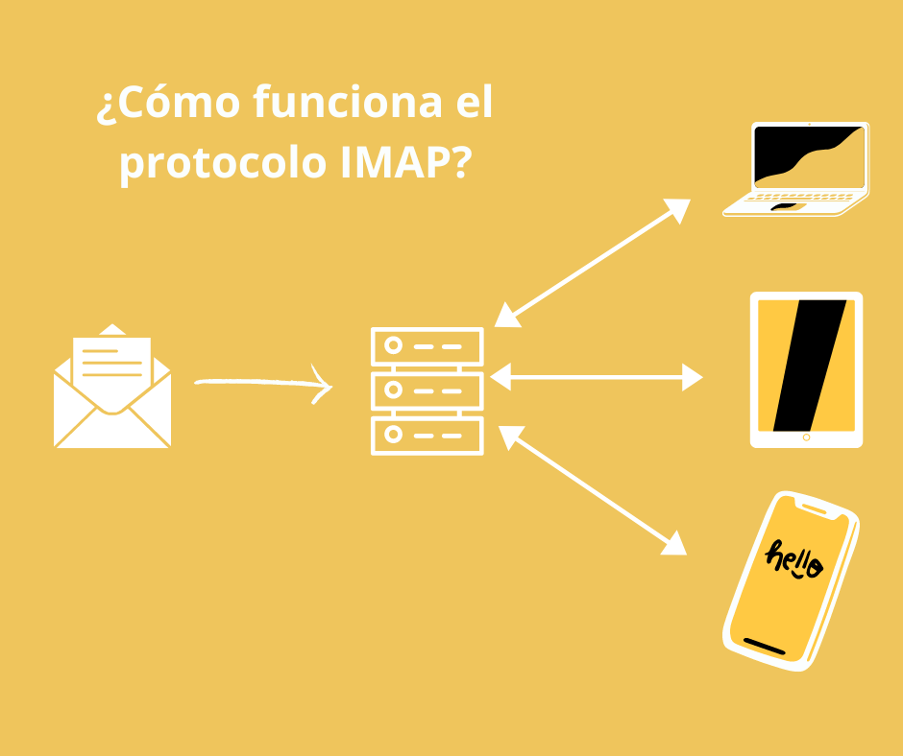IMAP Protocol: Features and How It Works
the 29 of August of 2024
the 29/08/2024
The IMAP protocol is a fundamental tool for efficiently managing emails today. IMAP, which stands for Internet Message Access Protocol, allows users to access and manage their emails from multiple devices, keeping all messages synchronized in real time. In this article, we’ll explore the main features of the IMAP protocol, how it works, and how it differs from other protocols like POP3.
TABLE OF CONTENTS
What Is the IMAP Protocol?
The IMAP protocol is a standard protocol used for receiving and sending emails. Alongside the POP3 protocol, it is one of the most popular methods for configuring email accounts. With IMAP, emails are managed directly on the server, as the messages are stored there without needing to be downloaded locally. This facilitates access from multiple devices and locations.
One of the main benefits of the IMAP protocol is its ability to keep messages synchronized. This means that any changes made to an email—whether it’s read, deleted, or moved to a folder—will automatically be reflected on all connected devices. This feature is especially useful today, as users often access their email accounts from various platforms, such as mobile phones, tablets, or computers.
How does the IMAP Protocol work?
Understanding how the IMAP protocol works is essential to fully benefit from its advantages. This tool is based on constant synchronization between the server and the email client. In other words, when a user logs into their email account, the client connects to the server via IMAP and accesses a copy of the messages, while the originals remain on the server.
Thus, the IMAP protocol stands out for its flexibility and accessibility, making it the preferred choice for most email service providers.
How do IMAP and POP3 differ?
While IMAP and POP3 are both protocols used to access emails, they have some significant differences, such as:
1.- Access to Messages:
- IMAP: Messages are stored on the server and can be accessed from any device.
- POP3: Emails are downloaded and stored on the local device and are deleted from the server.
2.- Synchronization:
- IMAP: Synchronization between the server and all devices occurs in real time.
- POP3: There is no synchronization of message status; once downloaded, emails are removed from the server (unless configured to keep copies).
3.- Folders:
- IMAP: Supports the creation and management of multiple folders and subfolders directly on the server.
- POP3: Only manages the inbox and does not support folder management on the server.
4.- Multiple Access:
- IMAP: Allows simultaneous access to the email account from multiple devices.
- POP3: Typically designed to be used from a single device at a time.
5.- Storage:
- IMAP: Messages remain on the server, saving storage space on the device.
- POP3: Emails are stored locally after being downloaded to the device.
6.- Complexity:
- IMAP: More complex to implement and requires a constant connection to the server.
- POP3: Simpler, with fewer commands and can function without a constant connection.
7.- Search:
- IMAP: Allows advanced searches directly on the server.
- POP3: Does not allow server searches; searches can only be performed locally after download.
In addition to these protocols, others like SMTP are necessary to enable the sending and delivery of emails. Choosing the right protocol for email management is an important decision that can impact the efficiency and accessibility of our communications.
In summary, the IMAP protocol offers several benefits, such as real-time message synchronization and access from multiple devices simultaneously. These features make it one of the preferred options for many users. However, it is crucial to consider specific needs and individual circumstances when making this decision. Reflecting on these differences and benefits can help optimize email management, ensuring a smoother and more effective experience.


















